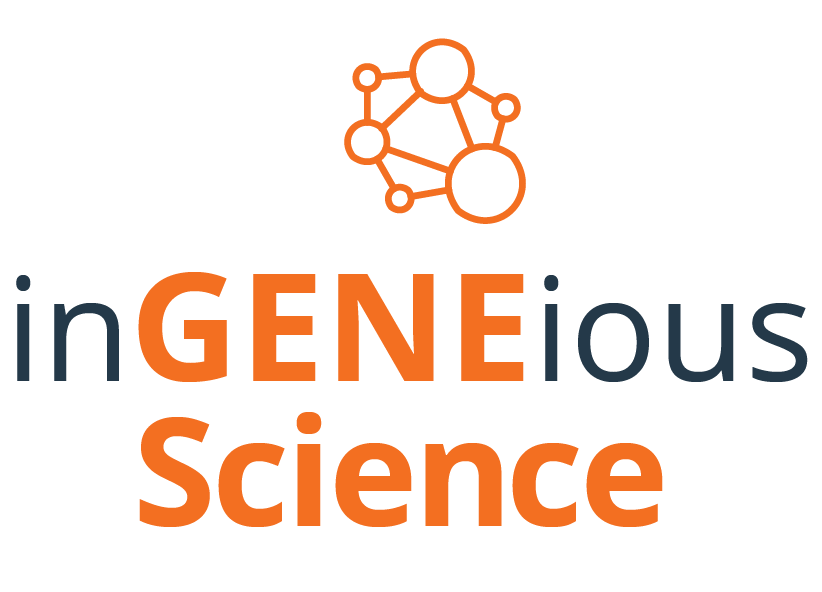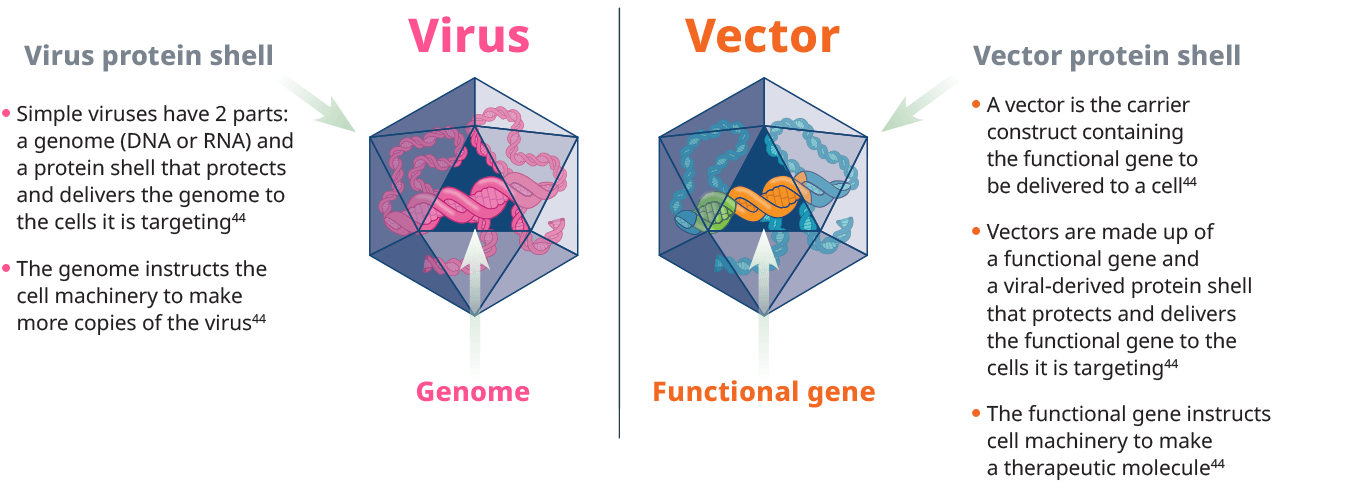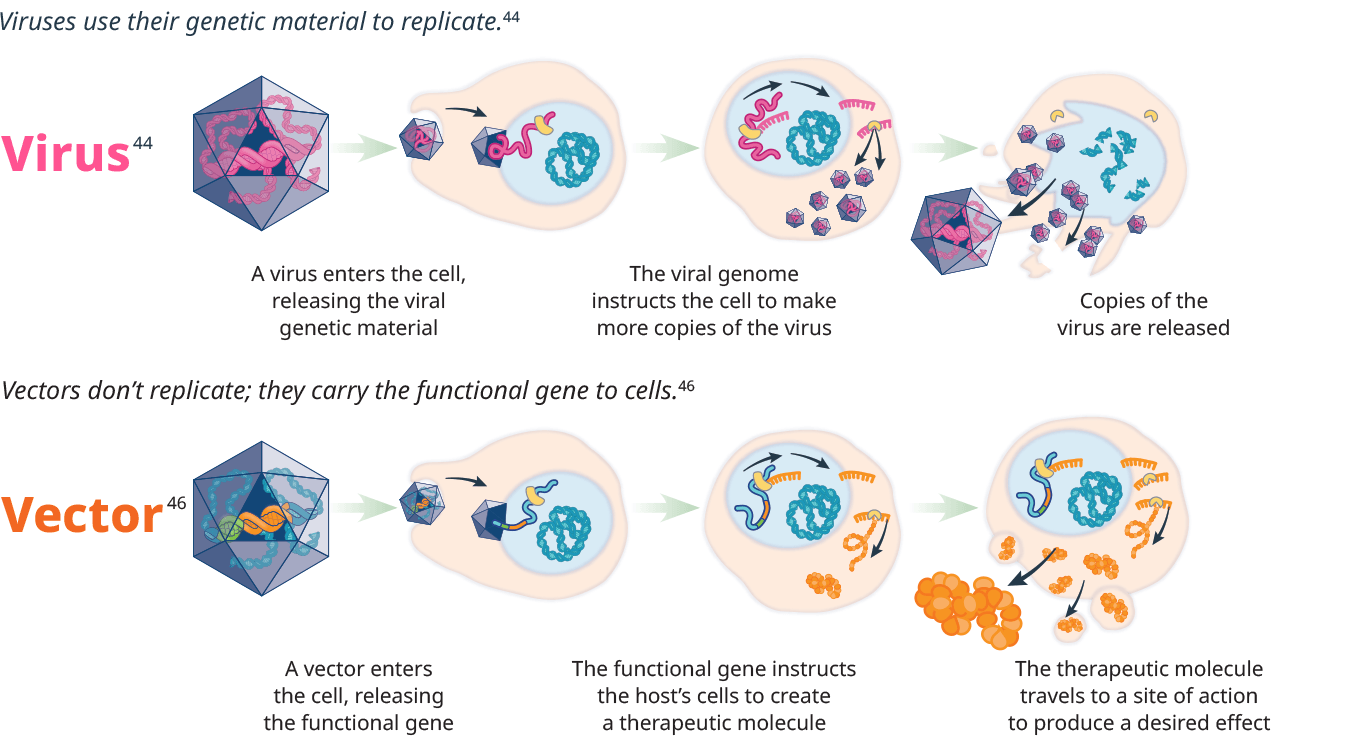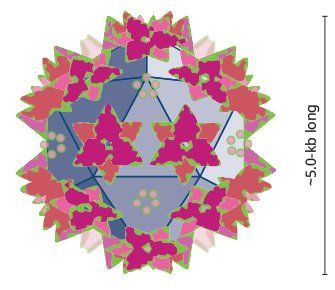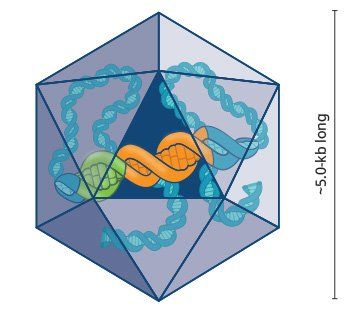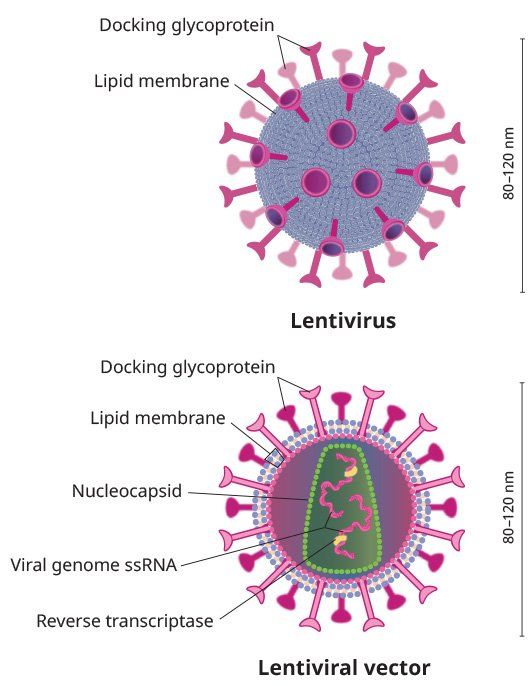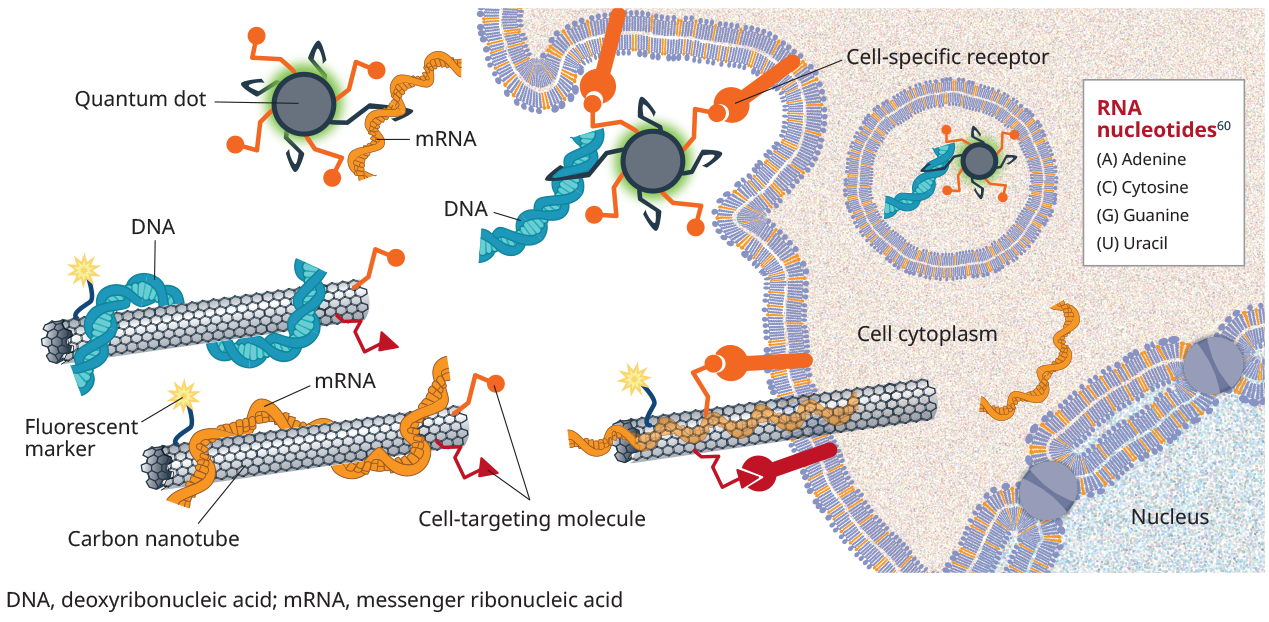Basic principles of genetics
Are there different types of gene therapy vectors being studied?
Are there different types of gene therapy vectors being studied?
Traditionally, gene therapy vectors are categorized into two main delivery systems: viral vectors and non-viral vectors.39 Viral-vectors use viral-derived delivery components (for example, adeno-associated viral [AAV] and lentiviral vectors). Non-viral vectors include nanoparticles and lipids.43 Both systems are used as vehicles to deliver the functional gene to the target cells.39
Viruses have evolved to efficiently deliver the genome inside the cells they infect. Gene therapy has taken advantage of this feature by engineering the protein shells of specific viruses to protect and deliver the functional gene to the target cells.39
Viruses are made up of a genome and a protein shell.44 When making a vector, the viral-derived protein shell is repurposed to deliver the functional gene.45
How do viruses and vectors work?
Can vectors be derived from different viruses?
There are different viruses that can be modified as vehicles to deliver the functional gene to the target cells.39
Two of the viral vectors currently being tested for potential use in gene therapy are listed below.
In the 1960s, scientists discovered small “virus-like” particles in studies of adenovirus cell types. These “virus-like” particles were infectious like adenovirus yet did not cause disease; hence their name—adeno-associated virus, or AAV.47 The virus itself has been researched for almost 55 years and has been developed as a vector for about 35 years.48 As of July 2020, there are two FDA-approved AAV gene therapies in the United States.49
The prevalence of wild-type AAVs in human tissues suggests that natural infections with this virus are common. Up to 60% of adults have naturally been exposed to an AAV during their lifetime, but prevalence numbers can vary depending on the serotype.50
AAVs do not cause disease and are unable to replicate in the target cell without co-infection of a helper virus.45
The protein shell of AAV is repurposed as a package to protect and deliver the functional gene to the cells it is targeting to treat genetic diseases.44
The protein shell of AAV is repurposed as a package to protect and deliver the functional gene to treat genetic disease.44
AAV-based gene therapy vectors are designed to enter the cell and deliver genetic material to the nucleus, which then circularizes to form an episome that contains the functional gene. Stable introduction of the AAV vector into a postmitotic cell as an episome can result in long-term expression of the transgene.51
AAV DNA molecules have been shown to persist as episomes in muscle, and in the heart, liver, brain, and lungs.45
However, the duration of effect for AAV-based gene therapy is currently unknown and may depend on the turnover rate in the target tissue or on other unidentified factors.
Long-lasting gene expression also depends, in part, on the type of promoter used to drive its expression.53
Tissue-specific promoters
are advantageous because of their ability to direct expression of protein in target cells, while having little to no effect in other cell types.54,55
Lentivirus
Lentivirus is a type of retrovirus that uses viral reverse transcriptase and integrase to insert viral DNA into the host’s genome. Most of the lentiviral vectors presently being researched in gene therapy are human immunodeficiency virus-1 (HIV-1)–derived vectors.56 There is one approved lentiviral vector gene therapy licensed for use in Europe.57
Lentiviruses can integrate into the host cell genome.56
Genomic integration ensures stable gene expression; however, it can increase the risk of insertional mutations by either activating oncogenes or disrupting tumor suppressor genes.58
Non-viral vectors
Recently, emerging methods of using non-viral vectors, such as chemical vectors, have been developed as another way to transfect host cells. Broadly, chemical vectors are categorized into nano-, lipid-, peptide-, and polymer-based gene delivery systems.39,59
See below to learn more about two types of chemical vectors currently being tested for use in gene therapy.

